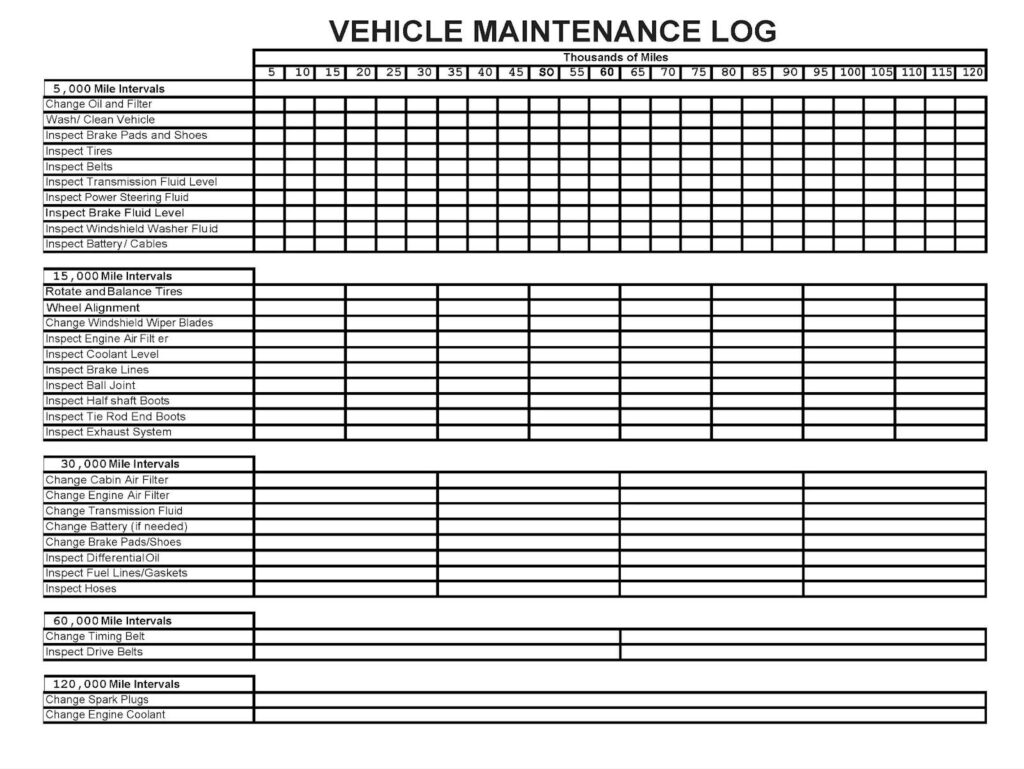Cars naturally become less roadworthy over time. That being said, some vehicles may last 40 years or more if they’re maintained properly. Basically any part you need for the engine, drivetrain, suspension, or brakes is available to buy. Trim parts like door panels and dash parts are harder to find if the vehicle is more than 15 years old, sometimes less.
Fortunately, you can maximize your daily driver’s lifespan by performing occasional check-ups. These are easy to do and usually don’t require much time and money.
Short-term check-ups are encouraged to spot signs of wear and to address them as soon as possible.

Short-Term Check-Ups to Maximize Your Car
Short-term check-ups are maintenance tasks you can occasionally do to ensure your car runs smoothly. The basics include checking the oil and coolant level, inspecting the air filter, and gauging the tire pressure and depth.
Check the Oil and Coolant Level Weekly
Always ensure your vehicle has enough oil and coolant to run efficiently. Ideally, it’s best to check both fluids whenever you fill up your gas tank or at least weekly to allow you to top up either one whenever they’re low. Your owner’s manual should have information about their location.
Inspect the Air Filter
A dirty air filter restricts airflow and strains engine components, leading to poor combustion and fuel efficiency.
If you notice the filter is dirty or damaged, the best thing to do is to get a replacement. On average, a brand-new filter costs around $60. You can find more information about the intervals and how to properly change an air filter in your owner’s manual.
Gauge the Tire Pressure and Tread Depth
Ensuring your tires are inflated to the proper psi is crucial to maintaining road safety and fuel efficiency.
Under-inflated tires can overheat because the larger surface area touching the road increases friction. Meanwhile, over-inflated tires could lead to blowouts if put under enough stress.
You’ll need a tire pressure gauge and an air pump to check the tire’s psi and inflate them properly. You can find more information about the correct amount of air pressure on your owner’s manual, the tire itself, or on a sticker inside the driver’s door.
It’s also a good idea to check your tire’s treads, as it’s an easy way to know if you need to replace your tires. You can do this by inserting a penny into the tread with Lincon’s head upside down. If you can see all of his head, then it’s time to replace the tires.
And while you’re at it, you might as well get a spare tire if you don’t have one already. Spares allow you to change one tire, but they’re not designed to be driven for extended periods. That means you’ll need to replace the spare as soon as you get to an auto shop.
Rotate the Tires
On the subject of tire care, rotation is another maintenance task to consider. As the name suggests, tire rotation means changing your tires’ position to evenly spread wear across all four tires to maximize tread life since each tire has different amounts of wear due to its placement.
For example, the front tires on front-wheel drives will naturally get more worn out because they’re the ones turning. To address this, you can rotate your tires every 6,000 miles or every other time you change your oil. Some tires stores will rotate the tires for free at every oil change if you bought the tires from them.
If you’re handy enough and have the necessary tools, you can even rotate them yourself.
Check the Lights
The lights on your car are vital safety components, as they provide visibility during low-visibility situations. They also let you communicate with other drivers. For example, illuminated brake lights signify the car is coming to a halt. Accidents happen when one driver does something other drivers don’t expect. The stop lamps and turn signals are how other drivers know you’re slowing, stopping, or turning.
Headlights
Driving while your headlights are dim, flickering, or inoperative is not only risky but also illegal. Here’s how long each type of headlight can last:
- Tungsten-Halogen: 500 to 1,000 hours
- Xenon: 10,000 hours
- HID: 2,000 hours
- LED: 30,000 hours
Note that these are rough estimates, so you should still inspect the headlights to see if they’re starting to dim. In addition, replace or refinish any foggy plastic headlight assemblies.
Turn Signals
As mentioned, some lights are used to communicate with other drivers on the road. One such component is the turn signals, which let you communicate where you’re going so others can act accordingly.
Turn signals will usually last around 4,000 hours, but it’s still something you should frequently check. Similar to headlights, you’ll only need to switch the turn signals on to check.
Brake Lights
As mentioned, brake lights allow the car behind you to see if you’re coming to a halt, which notifies the driver behind, giving them a chance to slow down to avoid collision. Brake lights can last up to four years or 40,000 miles, barring any physical damage.
Wax the Car
Waxing is a process that adds another protective layer to your vehicle, keeping the paint in good shape and reducing the odds of corrosion. The wax prevents the build-up of dust, sand, and salt, all of which can damage the paint job.
You can revive your car’s luster by waxing it yourself. You’ll save more money this way, as professional waxing costs between $55 and $150. In addition, you’ll only need a wax, a sponge applicator pad, and some microfiber towels.
Waxing is best done twice a year. Waxing it too often isn’t damaging, but it’s redundant and a waste of time and money because the protective layer won’t come off easily.
Interval of Short-Term Check-Ups
The interval of short-term check-ups depends on what you’re checking. For example, you can check the tire pressure each time you visit a gas station, while air filter inspection depends on the vehicle.
The owner’s manual that comes with your car should have more detailed information about the correct interval. However, you can make a checklist of all the processes listed above and perform them once a month or whenever you like. After all, there’s no harm in erring on the side of caution.
Any information provided on this Website is for informational purposes only and is not intended to replace consultation with a professional mechanic. The accuracy and timeliness of the information may change from the time of publication.

































